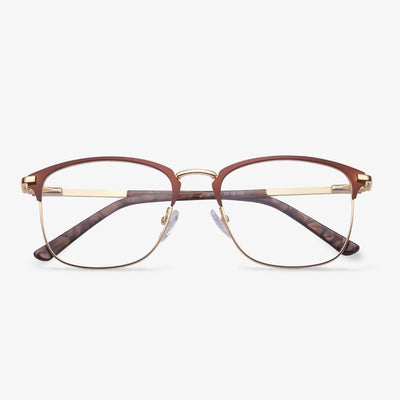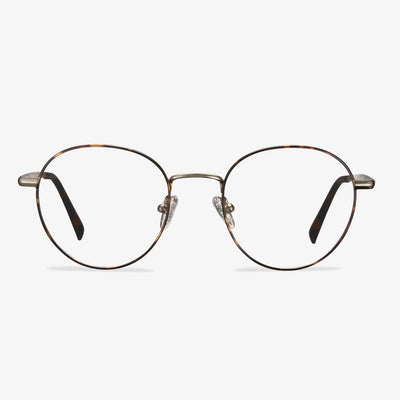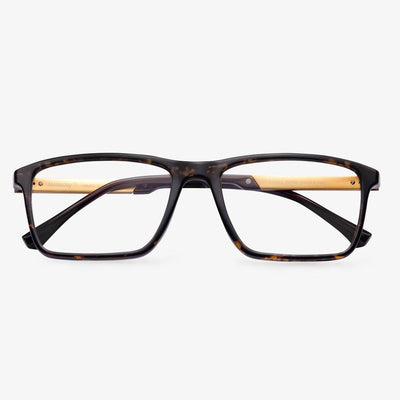The design evolution of progressive lenses
Spherical and aspheric designs
The design of the front surface of the far-use area of the early progressive lens is similar to that of the ordinary spherical single vision lenses, so it is called a spherical progressive lens. Since 1974, the front surface of the far-use region of the lens is designed to be aspheric by designers, which not only reduces the peripheral aberration but makes the lens thinner, lighter, and less powerful.
Hard and soft design
For hard design, the channel is short, and the gradient is large. The near-use area position is high. The effective visual area of remote and near-use areas was larger. Peripheral astigmatism is relatively concentrated. Because surrounding astigmatism increases rapidly and the distribution is dense, the curve effect is more obvious. The gradient area is narrow. It is more difficult and takes longer for wearers to adapt.
Lenses with soft designs have slower gradients, longer gradients, and wider gradients. The angle of rotation of the eye from the far area to the near area is greater. It's easier to get used to. Compared with the hard design, the effective visual area of the far and near use areas is smaller, and the location of the near use area is lower.
Single, diverse, and individualized design
Initially, the progressive lenses used a single design, in which each basic curve was scaled equally and a luminosity combination was added within the range of its semi-finished lens blanks. The steepest base curve uses the same lens design as the flattest base curve. Lenses designers quickly realized that the overall performance of the lens could be improved by microcustomizing the lens design, leading to progressive lenses with multiple designs. This kind of design is called diverse design. By the mid-1990s, there was the emergence of individualized lens designs. In addition to using different gradients, these first individualized lens designs used steeper baseline curves with a slightly larger approach area to compensate for increased magnification and reduced field of view.
Symmetrical and asymmetric design
There is no difference between the left and right eyes in the symmetrical design of progressive lenses. As the eyes turn inward when they see near objects, the gradual gradient area gradually tilts to the nasal side from top to bottom, so the left/right progressive lenses should be rotated clockwise/counterclockwise respectively during processing. An asymptotic lens with left and right eye divisions is called an asymmetric design. The gradient is gradually and moderately inclined to the nasal side from top to bottom. The refractive force, astigmatism, and vertical prism of the two sides of the left and right gradient of the asymmetric design lenses are basically similar. At the same time, considering the characteristics of eye movement parameters in binocular vision, the peripheral aberrations of the corresponding positions of the left and right lenses were appropriately balanced to improve the visual effect of the wearer.
Disadvantages of titanium glasses
Titanium and titanium glasses cost a lot to produce, requirements in buckling, stamping, cutting, and welding are very high, not easy to welding and electroplating.So the price is more expensive, only for high-end glasses frames.
Athletes wear non-prescription sunglasses.
Some people opt for non-prescription lenses for fashion reasons. Shatter-proof non-prescription glasses are popular among athletes. Cyclists wear glasses to protect their eyes from debris and to protect their eyes from the wind. Squash players may wear glasses to reduce glare on the squash court and to provide protection against ball collision or breaking up an opponent's racquet. Gun lovers can wear glasses to reduce glare in outdoor environments. Most non-prescription glasses do more than one thing, and safety is almost always a primary concern. These non-prescription sunglasses filter out harmful UV rays.
Choose blue light glasses with better quality lenses and frames.
Pay attention to the choice of true color lenses.0-12-year-old children are in the critical period of growth, and the color and things are in the cognitive stage. Blue light-blocking glasses should restore the true color as far as possible, with no blur. And it will not have a color difference. Pay attention to the strength of blue-light-blocking glasses. Choose a strong and flexible frame.
How do you know Ray Ban's frames are real?
Ray-ban Spectacle Case
The true Ray-ban spectacle case has good workmanship and thick leather. The case is covered with flannel. There are MADE IN ROMANIA words in the case. The leather of the imitation is rough and has two layers, one of which is pure hard plastic.
Ray-ban glasses lens cloth
The authentic Ray-ban glasses lens cloth is silver-gray, with the Ray-ban logo, and the lens cloth is shorter than the regular glasses cloth. The imitation is different in color, lacks hierarchy.
Ray-ban glasses ear rests
The authentic Ray-ban eyeglass glasses ear rests are made of metal, comfortably wrapped, and removable. The copies are not filled, and some cannot be taken off at will.
Ray-ban Glasses manual
There is not much difference in the instructions. The red part of the original is lighter than the imitation.
Tortoiseshell glasses are comfortable to wear.
For myopic friends, a comfortable frame is needed. Tortoiseshell glasses frame is convenient to wear. When you sweat in summer, the frames will not slide, and the bridge of your nose will not be marked. This is one of the reasons why many people like tortoiseshell frames.
For people who need to wear glasses, it is very important to match a suitable pair of glasses, because glasses will usually use for a long time. If the collocation is not good, it will not only affect the appearance, but bring dizziness, or even eye discomfort. Tortoiseshell glasses frame again gets the public love and becomes the pursuit of personality of modern fashion, tide.
Lions Club
Lions Club is a service organization with over 1 million members worldwide. Known for the work to improve the lives of the visually impaired and prevent avoidable blindness, they are proud to serve their ongoing efforts by providing unique and influential programs and grants. One of their missions, Lions Recycle for Sight, helps those who desperately need eye care and glasses that they either can't afford or don't have access to. The Lions Club accepts donated prescription glasses, sunglasses, and card readers, but only sunglasses and card readers can be distributed in the U.S. All other donations go to help individuals in developing countries.


















































